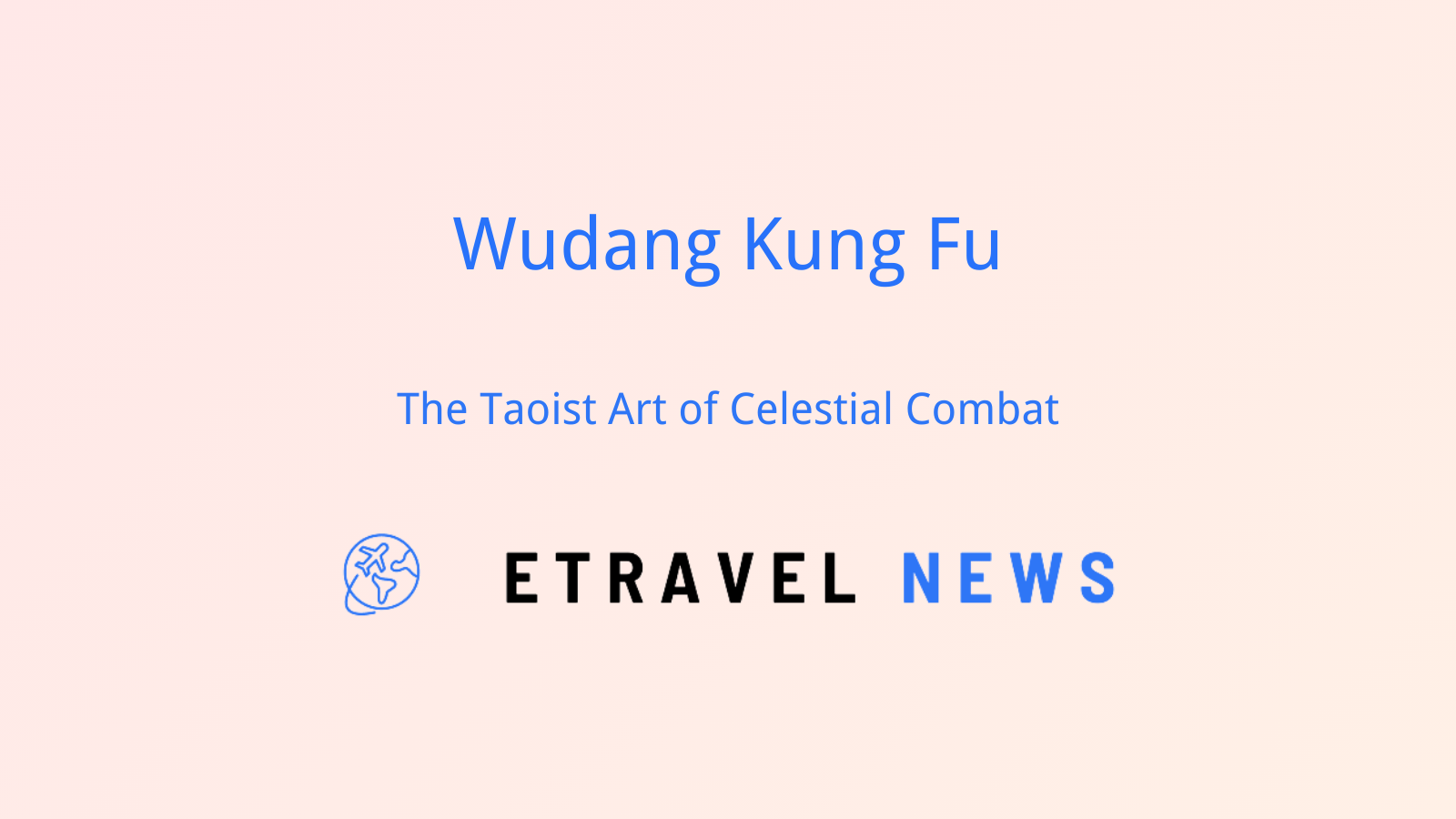Introduction to Wudang Kung Fu
Nestled in the misty peaks of Hubei province, Wudang Kung Fu emerged as a profound martial expression of Taoist philosophy. This ancient art form, deeply rooted in the Wudang Mountains, stands as a testament to the harmonious blend of spiritual cultivation and martial prowess.
Born from the serene landscapes that have inspired Taoist practitioners for millennia, Wudang Kung Fu distinguishes itself through its emphasis on internal energy cultivation and circular movements. Unlike the more extroverted styles of Shaolin Kung Fu, Wudang techniques often appear soft and flowing, masking their lethal potential.
The style’s intimate connection with Taoism infuses it with a unique approach to combat and self-defense, one that seeks to overcome opposition through yielding and redirection rather than brute force.
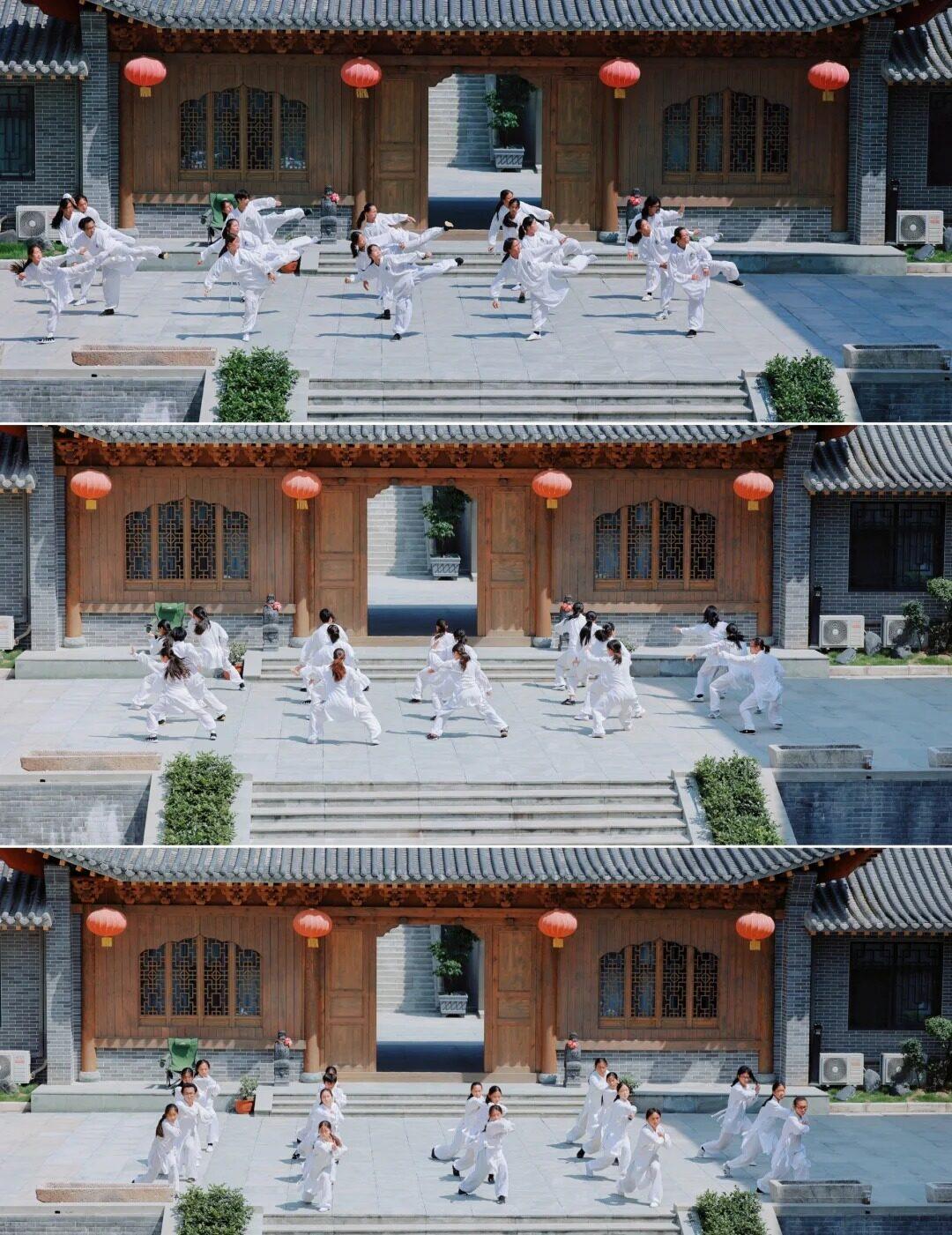
Core Principles and Philosophy
At the heart of Wudang Kung Fu lies a profound adherence to Taoist principles:
- Qi Cultivation: Focusing on the development and circulation of internal energy
- Yin-Yang Balance: Harmonizing opposing forces within techniques
- Wu Wei: The concept of “non-doing” or effortless action in combat
These philosophical underpinnings guide practitioners towards a practice that transcends mere physical techniques, becoming a path of spiritual growth and self-discovery.
Wudang Kung Fu emphasizes harmony with nature, often incorporating movements inspired by animals and natural phenomena. This approach not only informs the physical practice but also cultivates a deep respect for the natural world and one’s place within it.
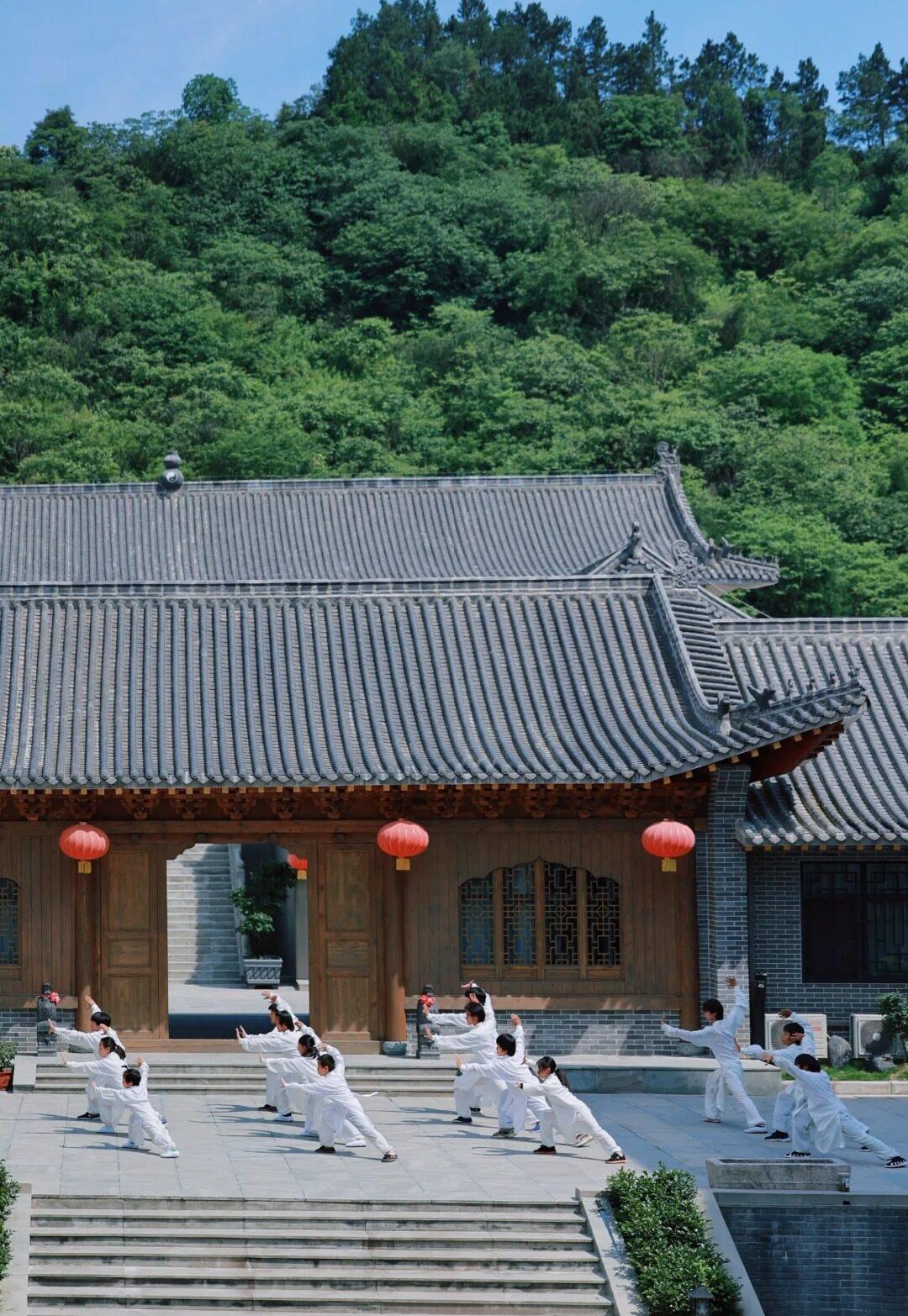
Key Techniques and Forms
Wudang Kung Fu encompasses a rich variety of techniques and forms, each designed to develop different aspects of the practitioner’s skill and internal power:
| Category | Examples | Purpose |
|---|---|---|
| Basic Stances | Horse Stance, Cat Stance | Foundation building, stability |
| Signature Forms | Tai Yi, Xuan Wu | Energy cultivation, martial application |
| Weapons Training | Sword, Staff, Fan | Extended energy projection, versatility |
| Qigong & Meditation | Eight Pieces of Brocade, Sitting Meditation | Health maintenance, spiritual development |
The practice of Wudang Kung Fu is holistic, integrating physical movements with breathing techniques and mental focus. Forms like Tai Yi emphasize slow, deliberate movements that build internal power, while more dynamic forms like Xuan Wu demonstrate the martial applications of this cultivated energy.
Weapons training in Wudang Kung Fu is particularly renowned, with the straight sword (jian) holding a place of special significance. The fluid, graceful movements of Wudang sword forms are often likened to a dance, embodying the Taoist principle of softness overcoming hardness.
Famous Masters and Lineages
The history of Wudang Kung Fu is rich with legendary figures:
- Zhang Sanfeng: Semi-mythical Taoist priest credited with founding Wudang martial arts
- Zhong Liquan: Ming Dynasty master who systematized many Wudang techniques
- Li Heng-wei: Modern master instrumental in preserving Wudang arts post-Cultural Revolution
Today, several prominent masters continue to teach and promote Wudang Kung Fu globally. The traditional lineage system remains important, with knowledge passed down from master to disciple in an unbroken chain stretching back centuries.
Preservation efforts in recent decades have been crucial in maintaining the authenticity and depth of Wudang Kung Fu. Many schools now combine traditional teaching methods with modern approaches to make the art more accessible to contemporary students.
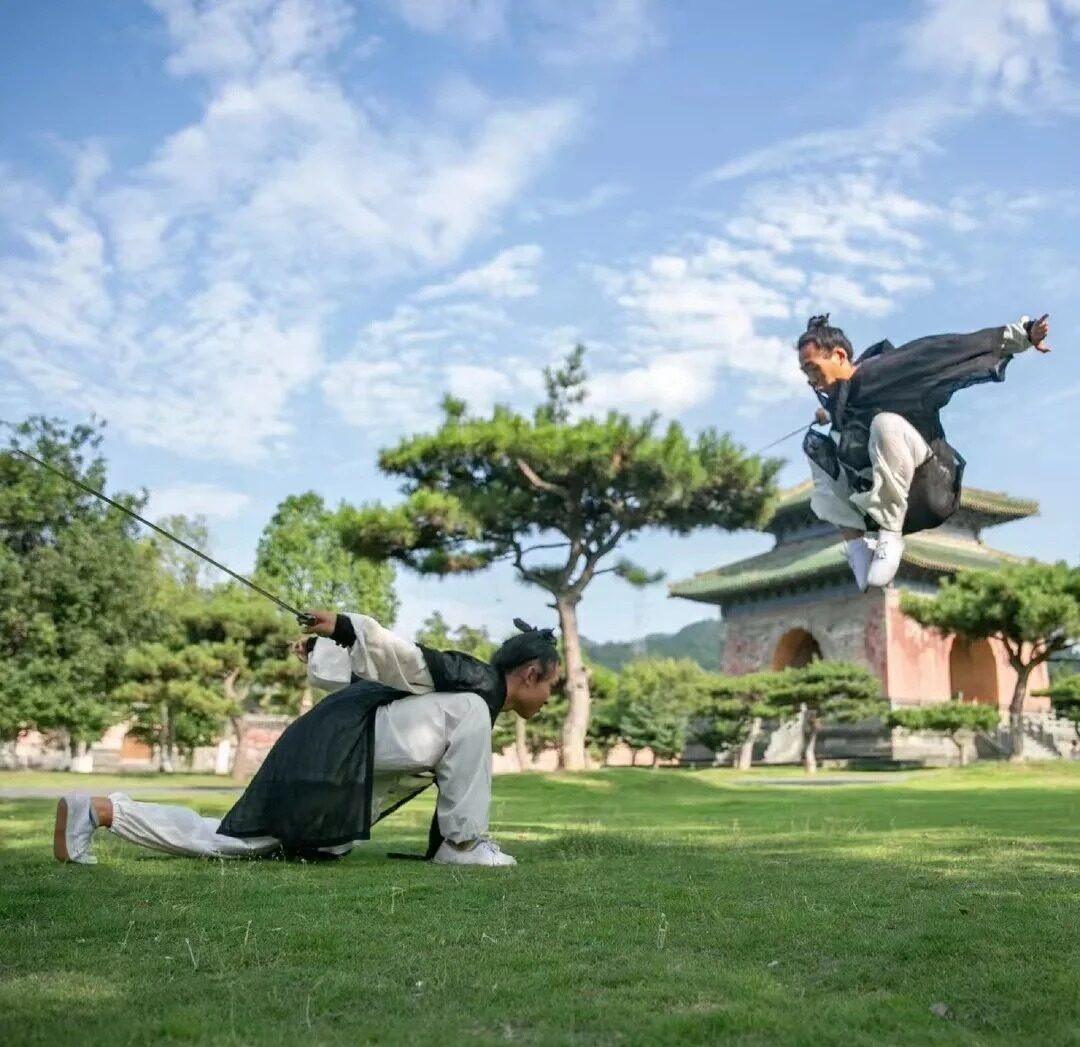
Training and Learning Opportunities
For those seeking to delve into Wudang Kung Fu, options range from immersive experiences in the Wudang Mountains to international schools:
- Traditional Training: Long-term apprenticeships with masters in Wudang
- Modern Academies: Schools in major Chinese cities offering structured programs
- International Options: Certified instructors teaching abroad
- Short-Term Courses: Intensive workshops for travelers and enthusiasts
Studying Wudang Kung Fu demands dedication and patience. The rewards, however, extend beyond physical skill to include improved health, mental clarity, and spiritual growth.
Cultural Impact and Modern Applications
Wudang Kung Fu has significantly influenced Chinese martial arts cinema, often portrayed as a mystical and powerful style. Films like “Crouching Tiger, Hidden Dragon” have brought Wudang’s flowing techniques to global audiences.
Beyond entertainment, Wudang Kung Fu finds modern applications in health and wellness practices. Its emphasis on gentle movements and internal energy cultivation makes it particularly suitable for stress reduction and improving overall well-being.
Compared to more aggressive martial arts, Wudang Kung Fu’s focus on circular movements and energy redirection offers a unique approach to self-defense, one that’s particularly effective against stronger opponents.
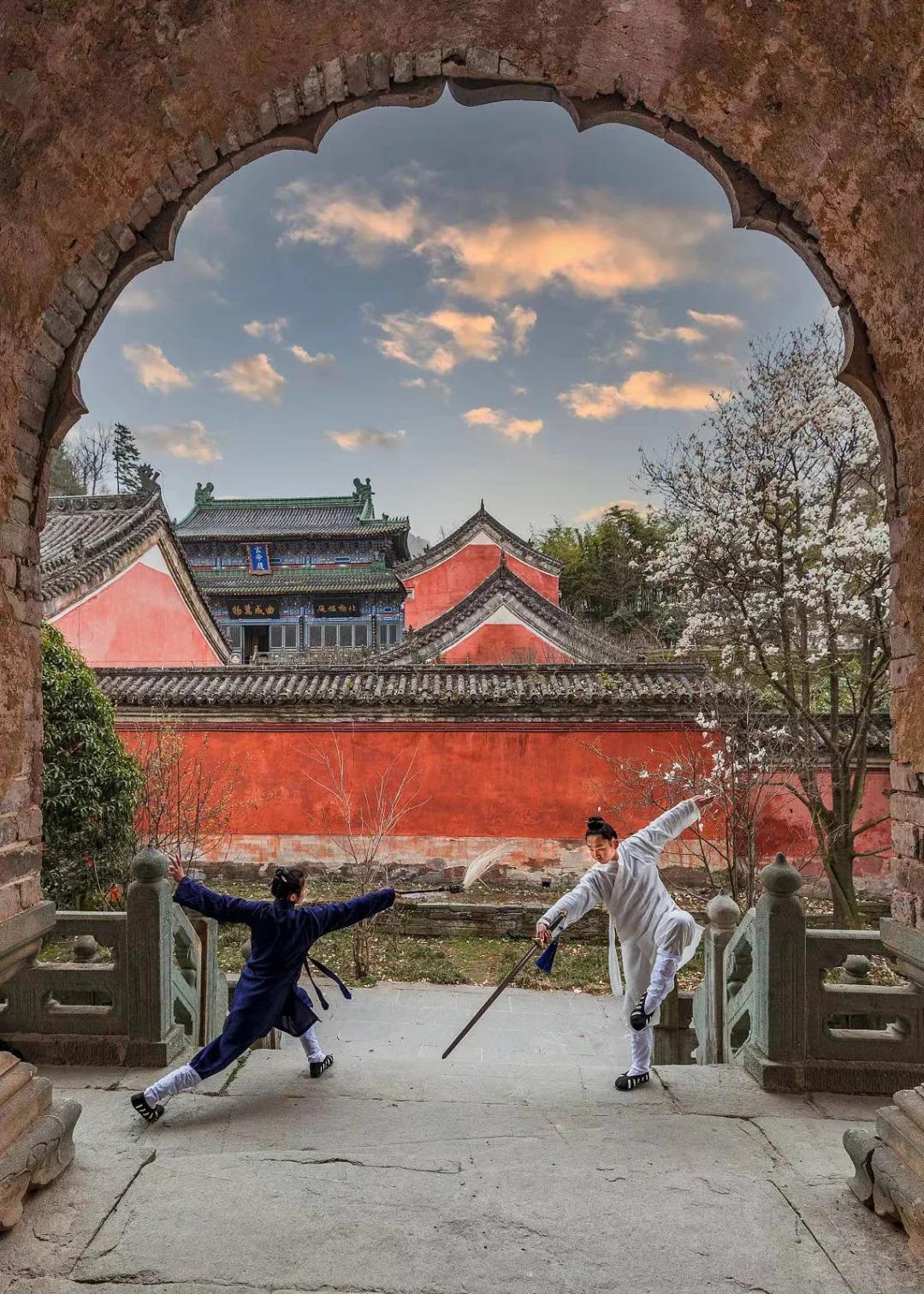
Experiencing Wudang Kung Fu as a Traveler
For those eager to witness or experience Wudang Kung Fu firsthand:
- Best Times to Visit: Spring (April-May) and Autumn (September-October) offer pleasant weather for outdoor practice.
- Key Locations: Purple Cloud Temple and Nanyan Palace regularly host demonstrations.
- Etiquette: Dress modestly and show respect when observing or participating in practices.
Combining a Kung Fu experience with exploration of the Wudang Mountains offers a holistic journey into Taoist culture and Chinese martial arts heritage.
Wudang Kung Fu represents more than just a martial art; it’s a gateway to understanding Taoist philosophy, Chinese culture, and the profound connection between mind, body, and spirit. Whether you’re drawn to its graceful movements, spiritual depth, or historical significance, exploring Wudang Kung Fu promises a unique and enriching experience.


